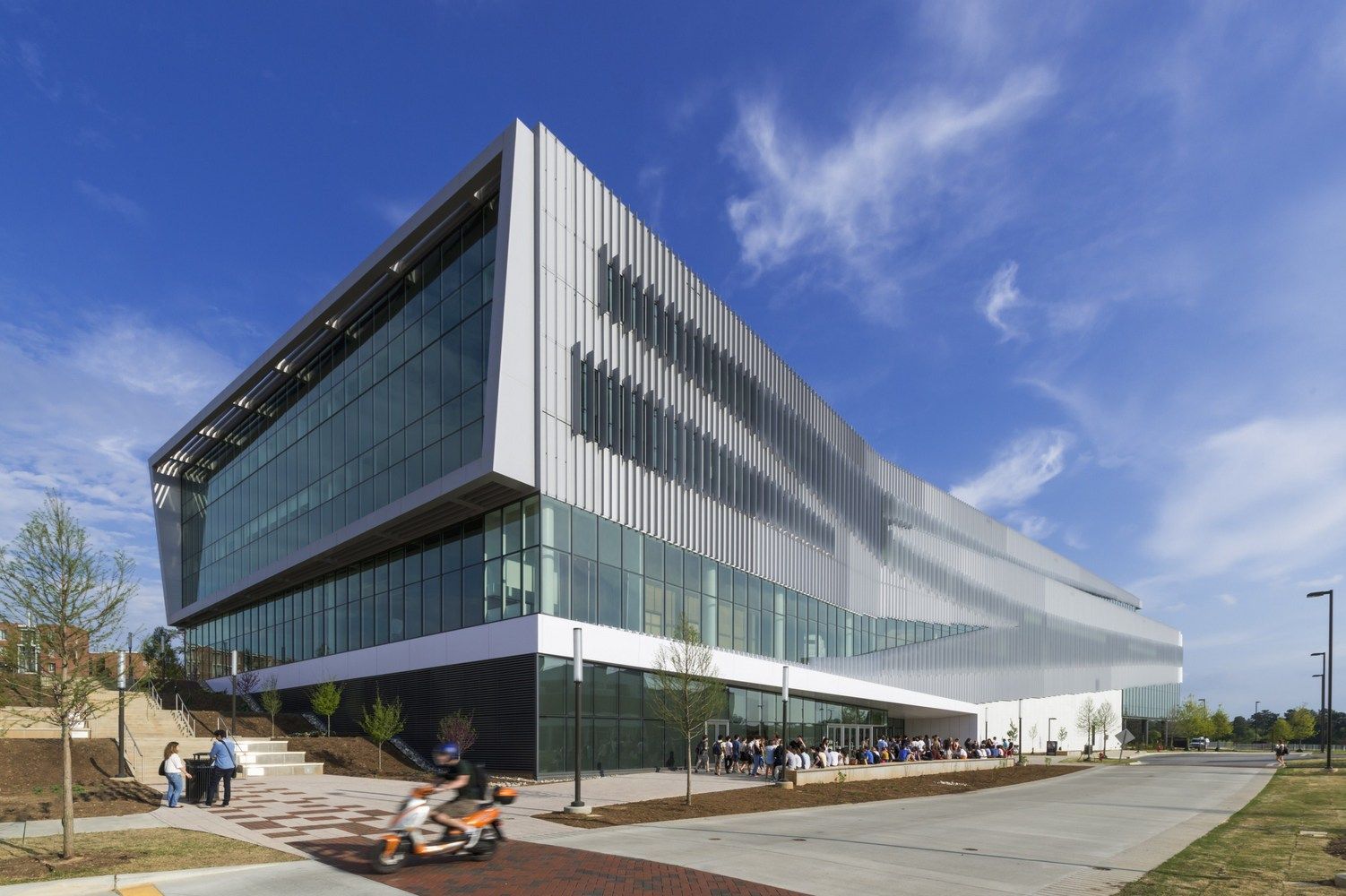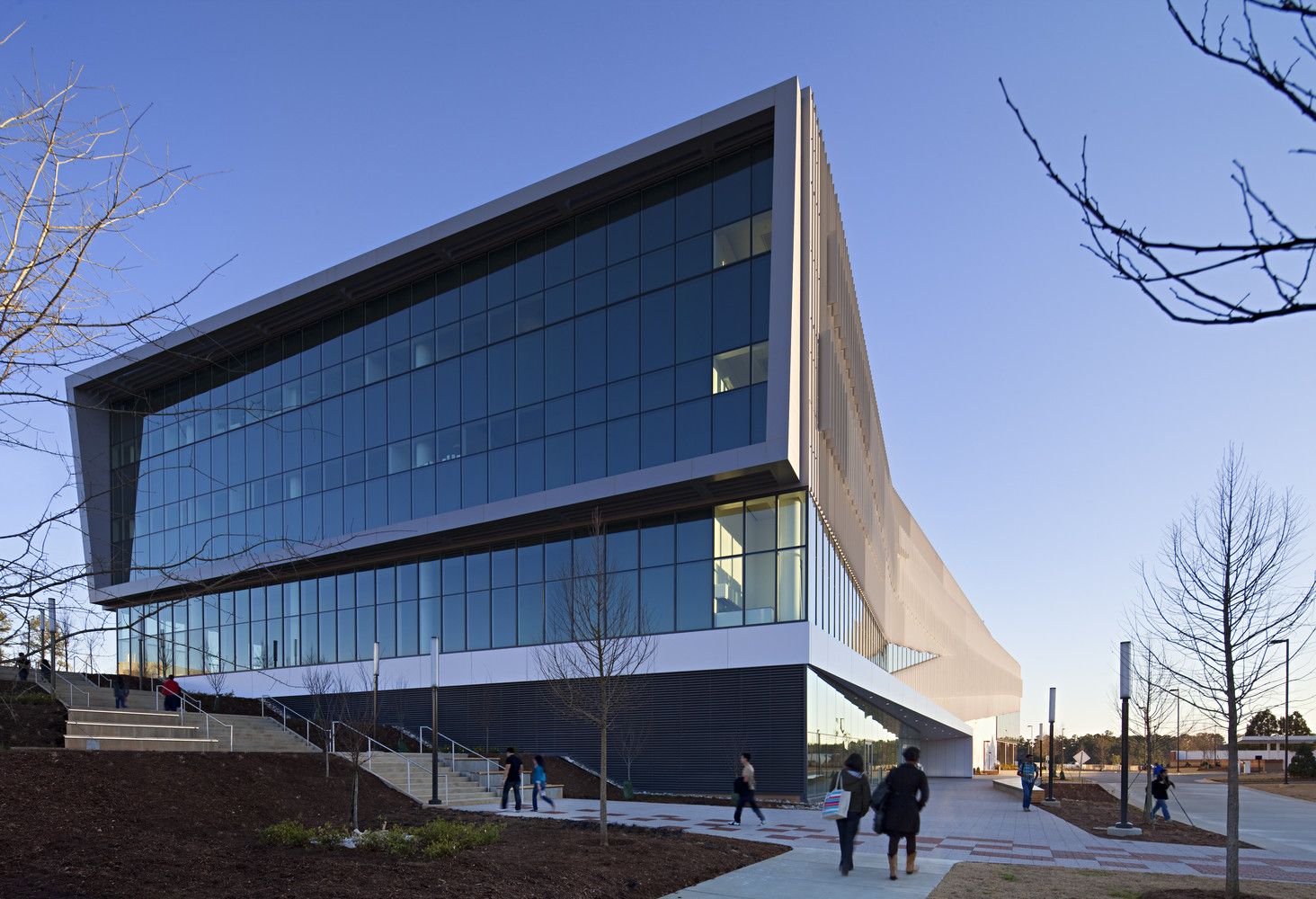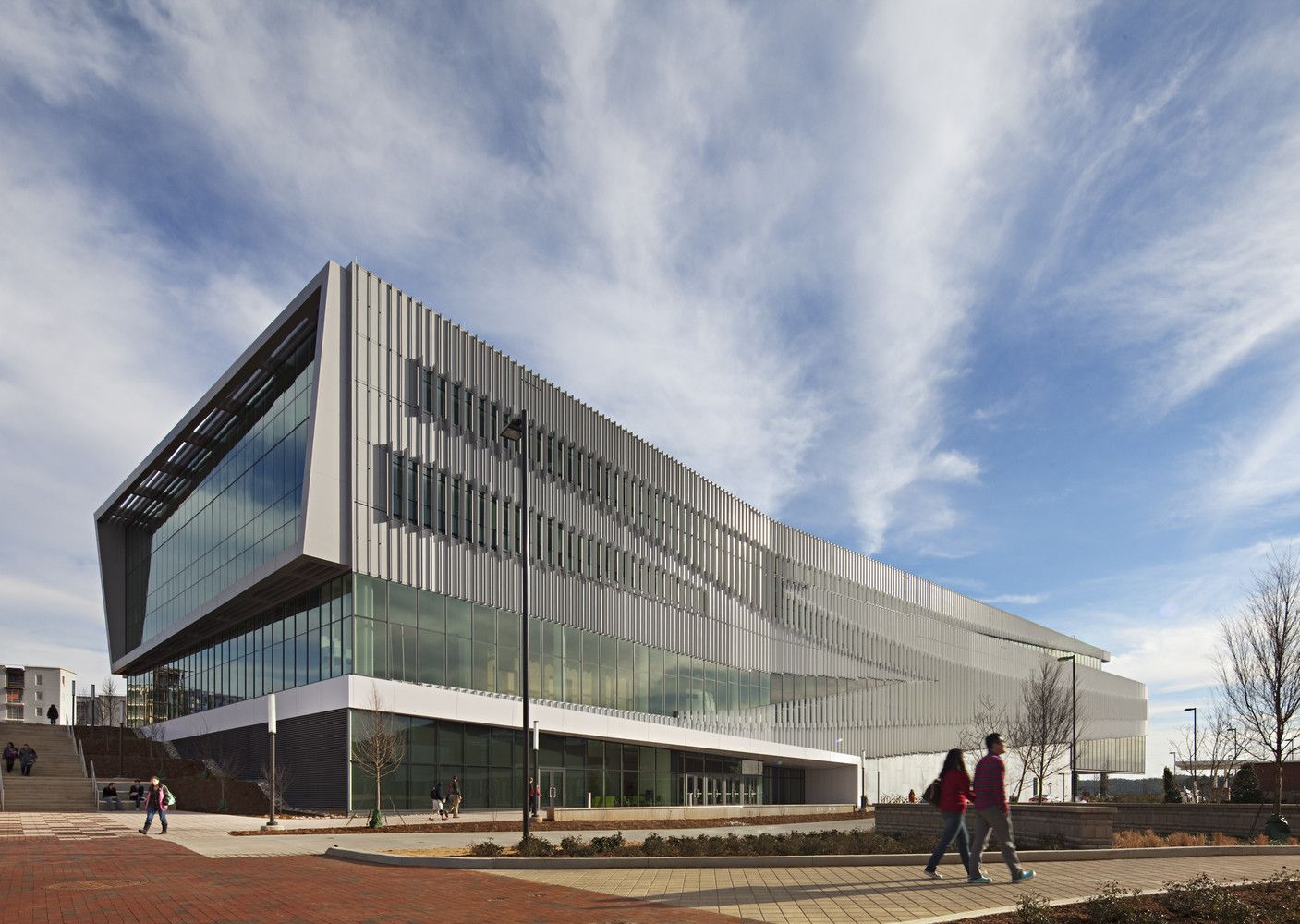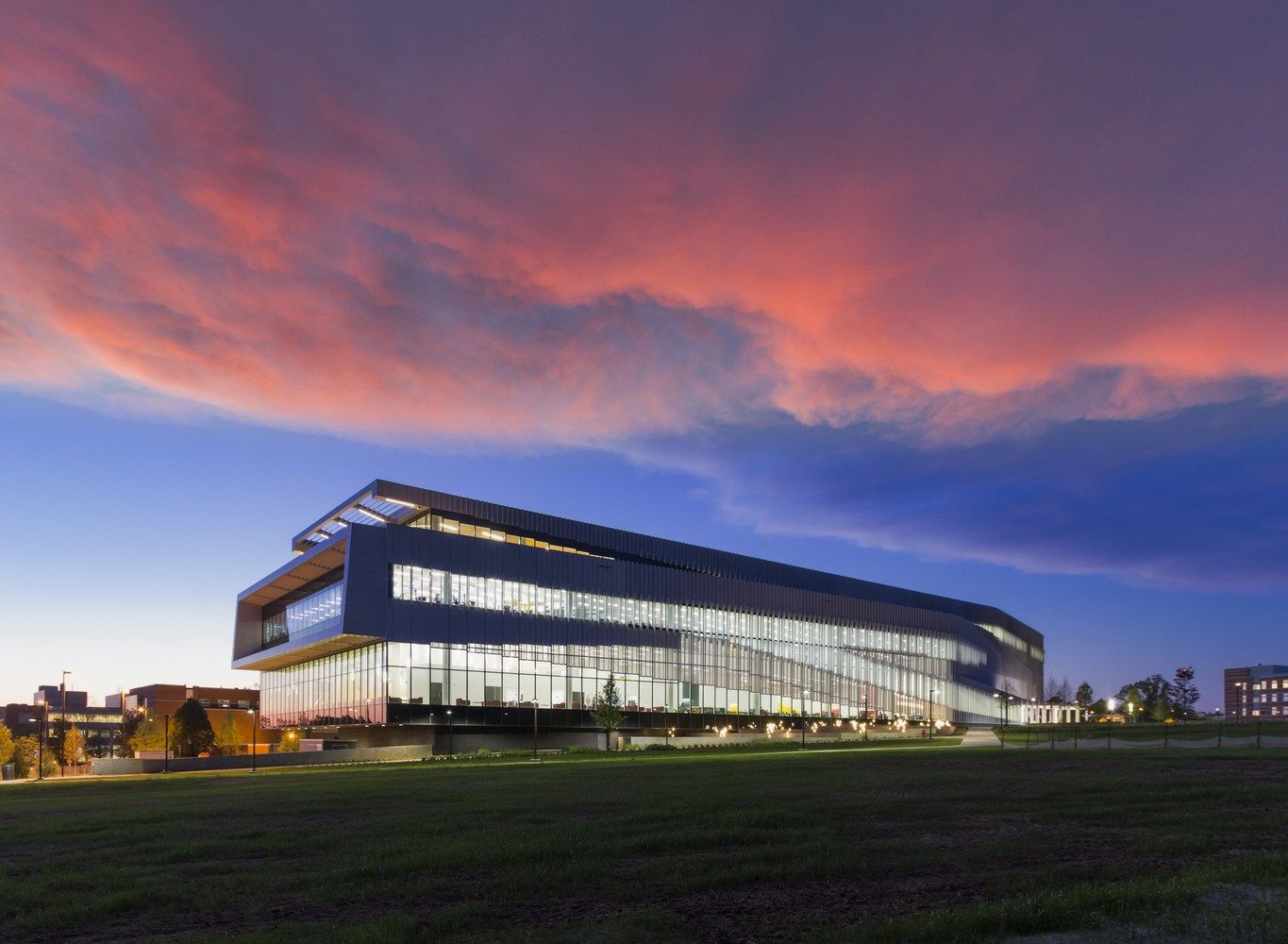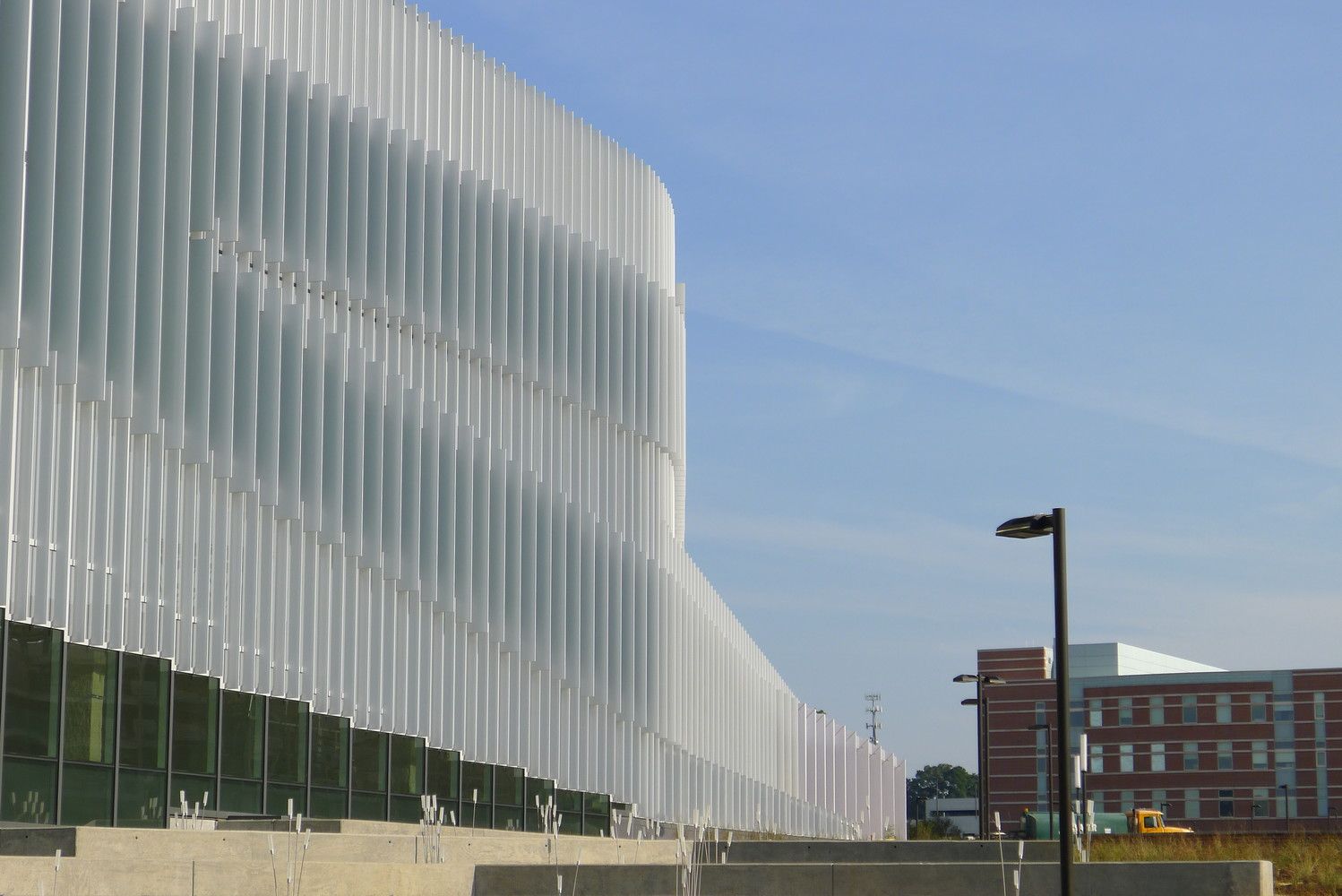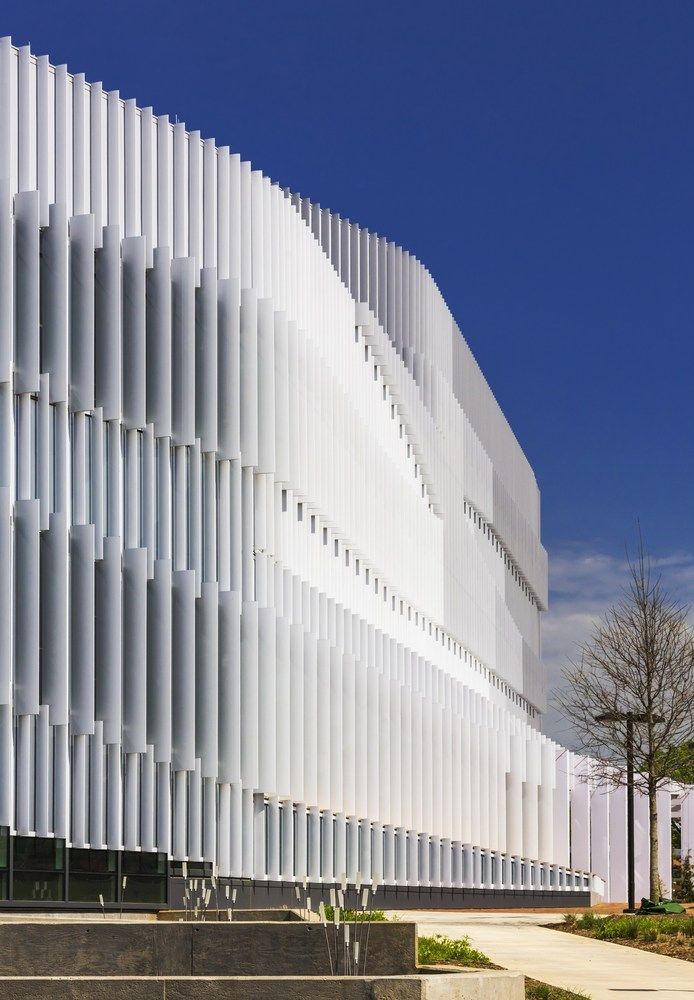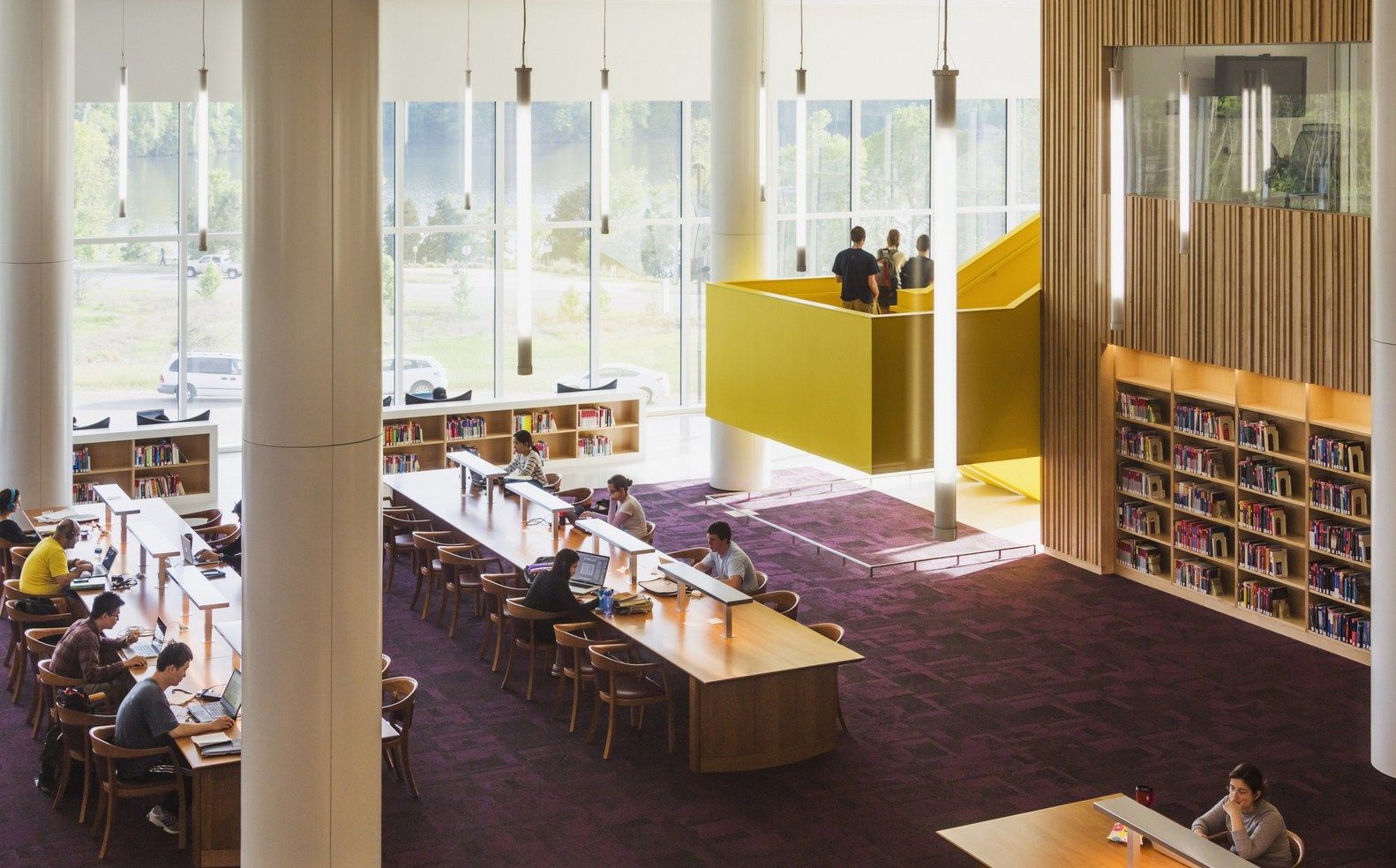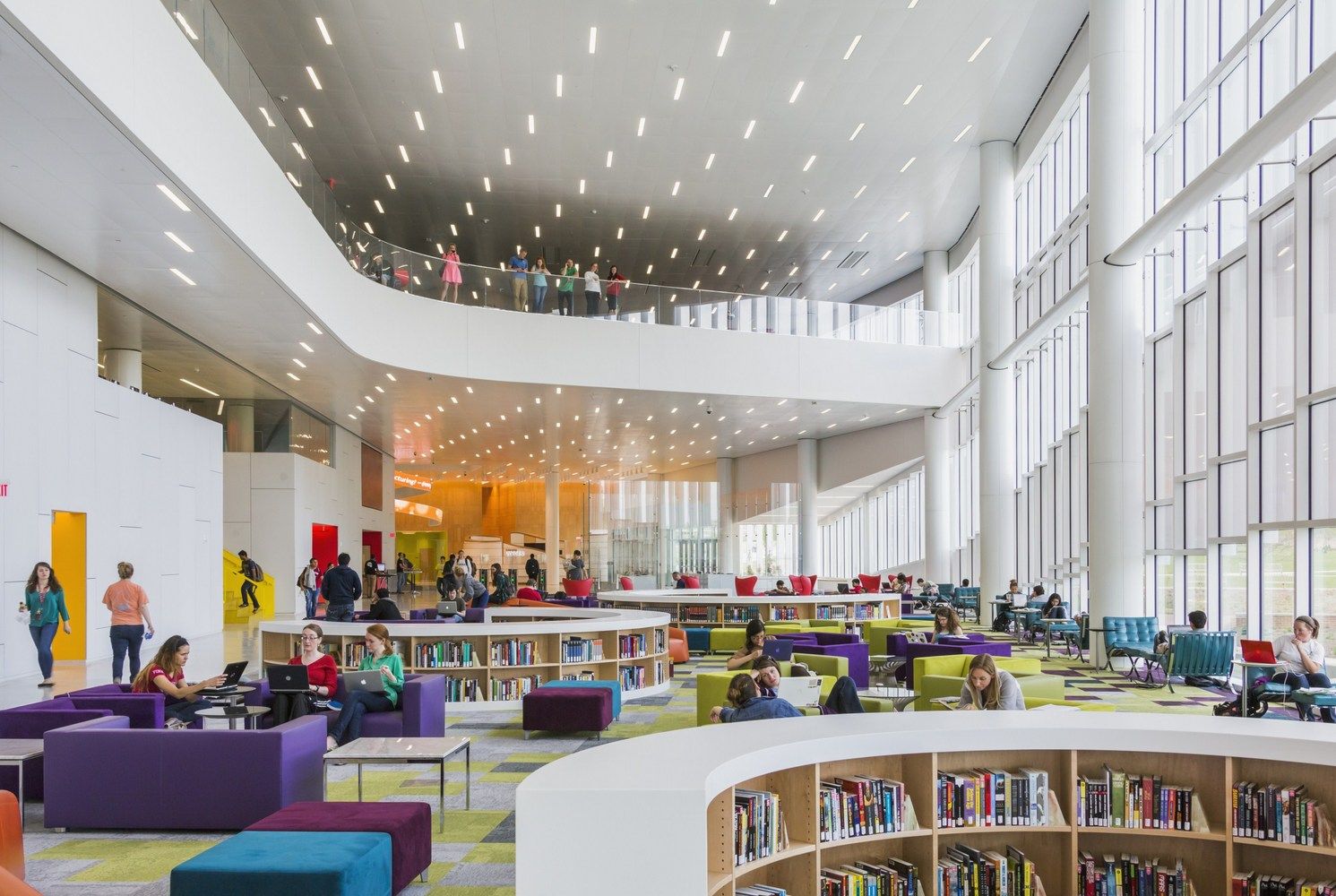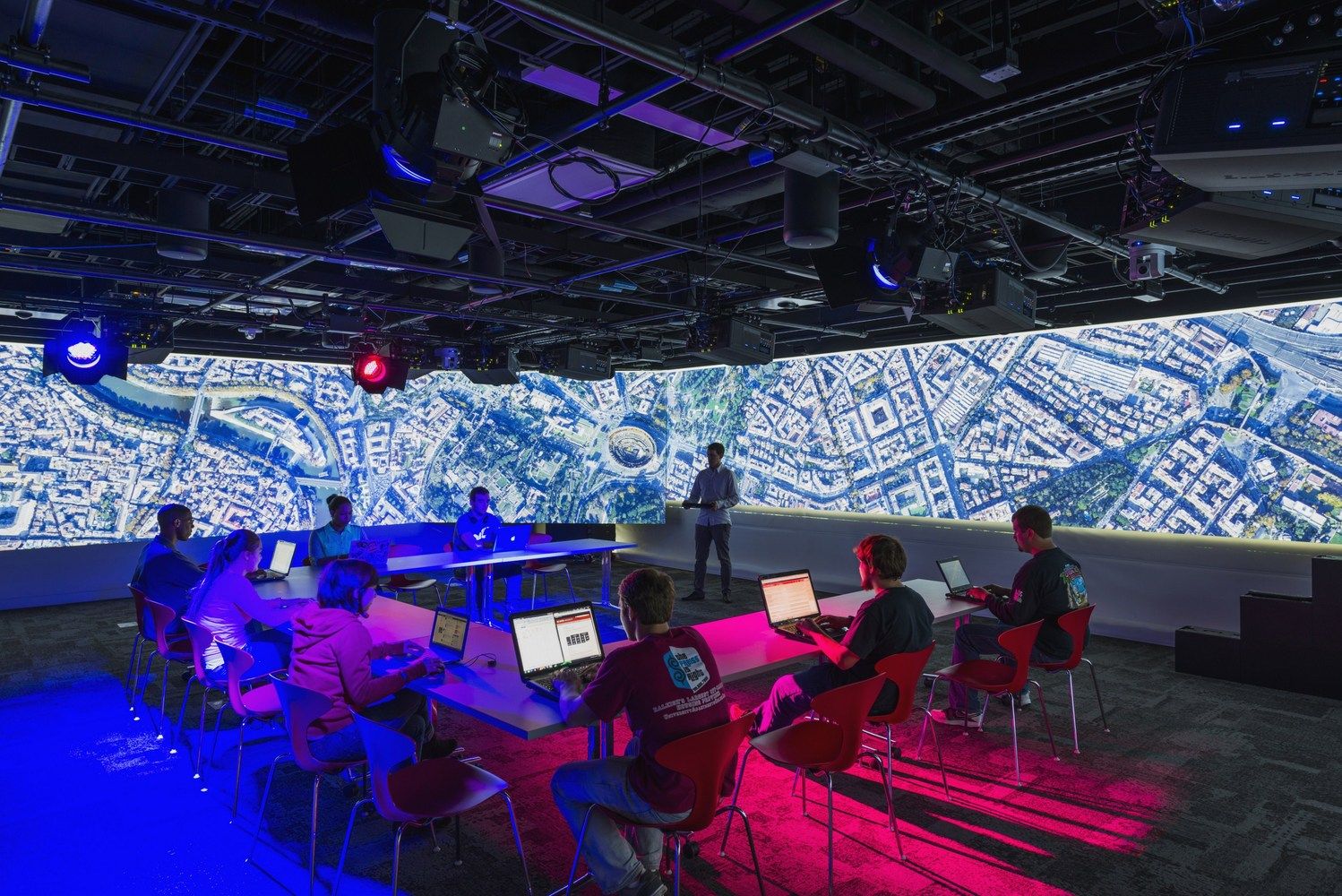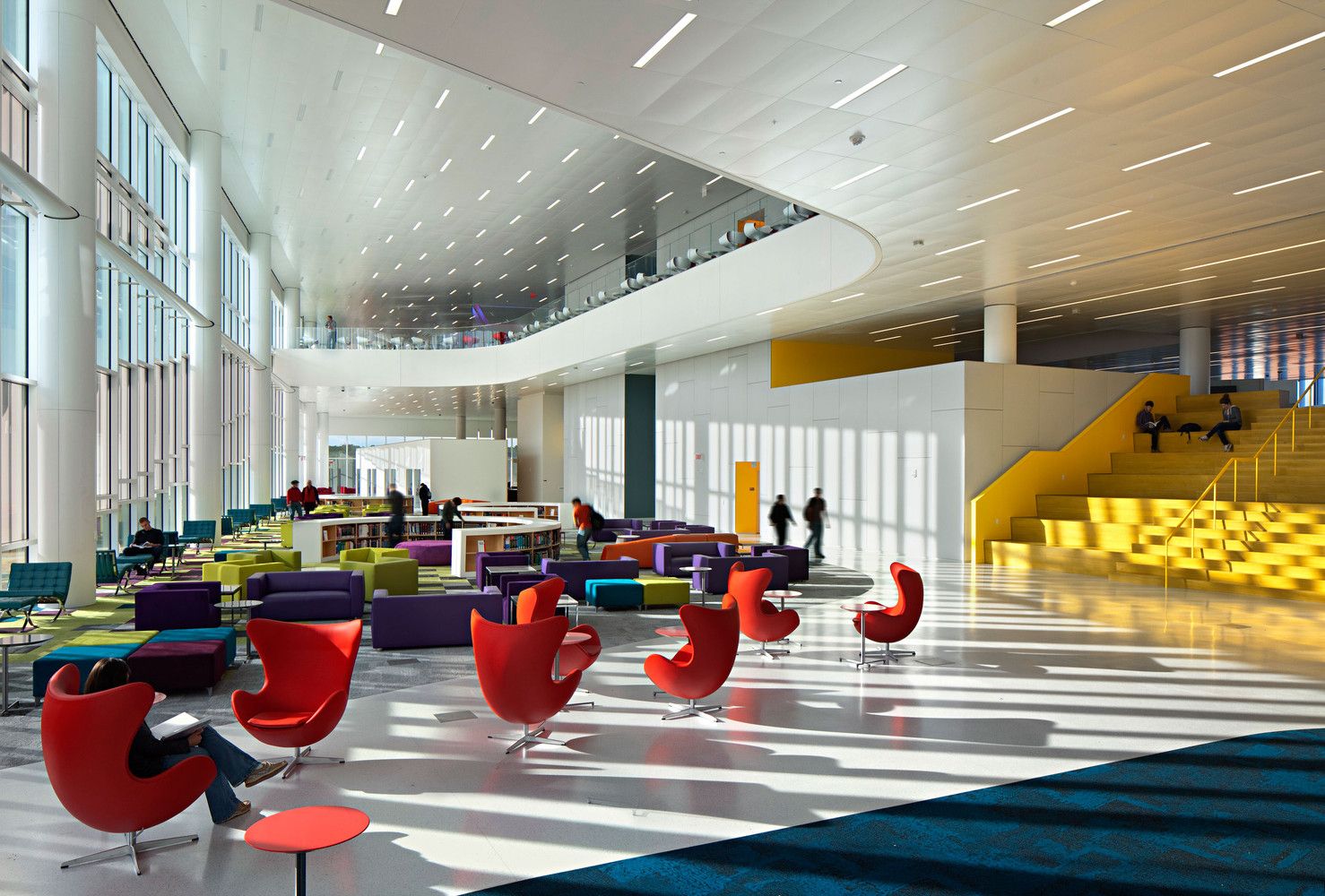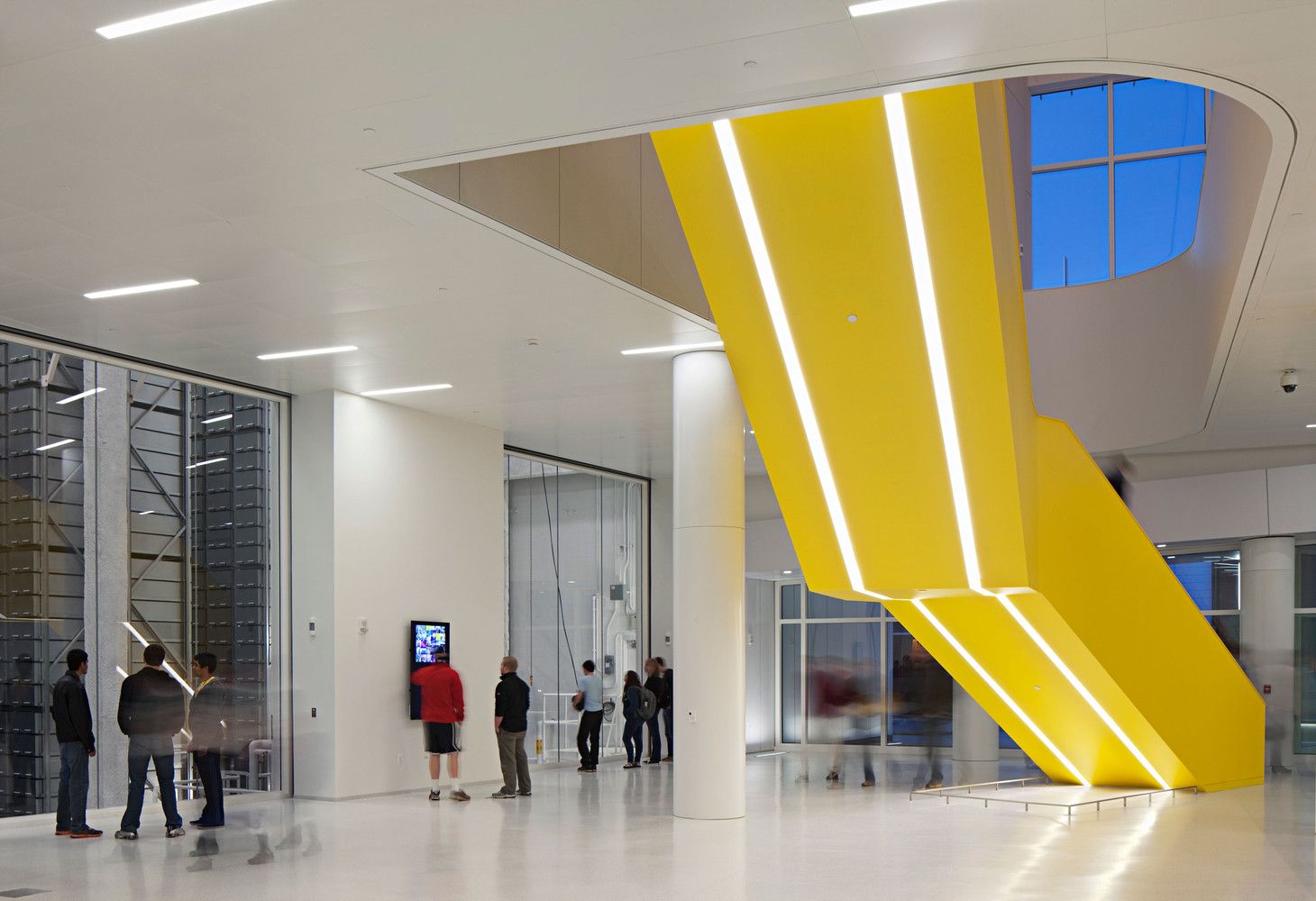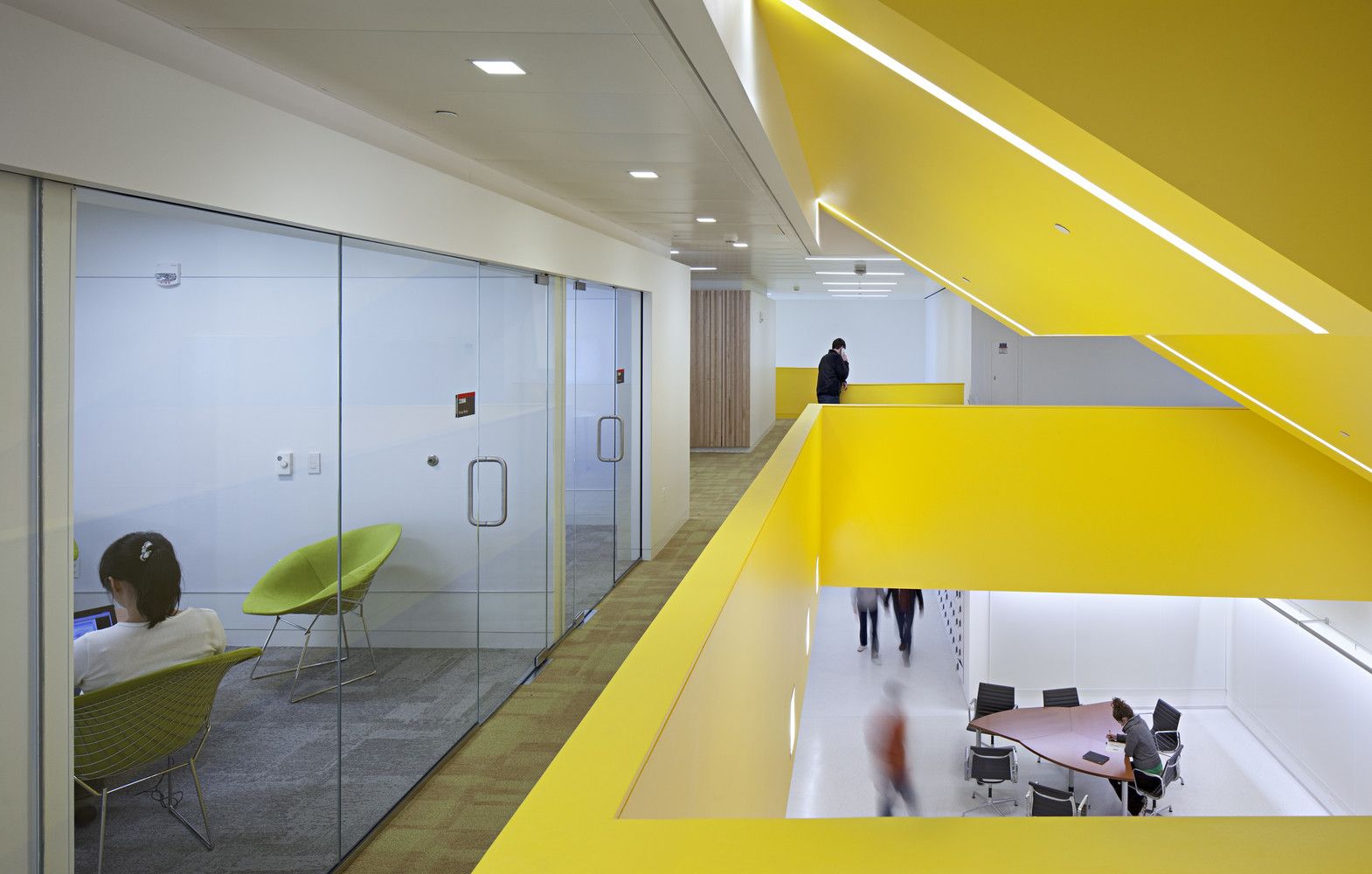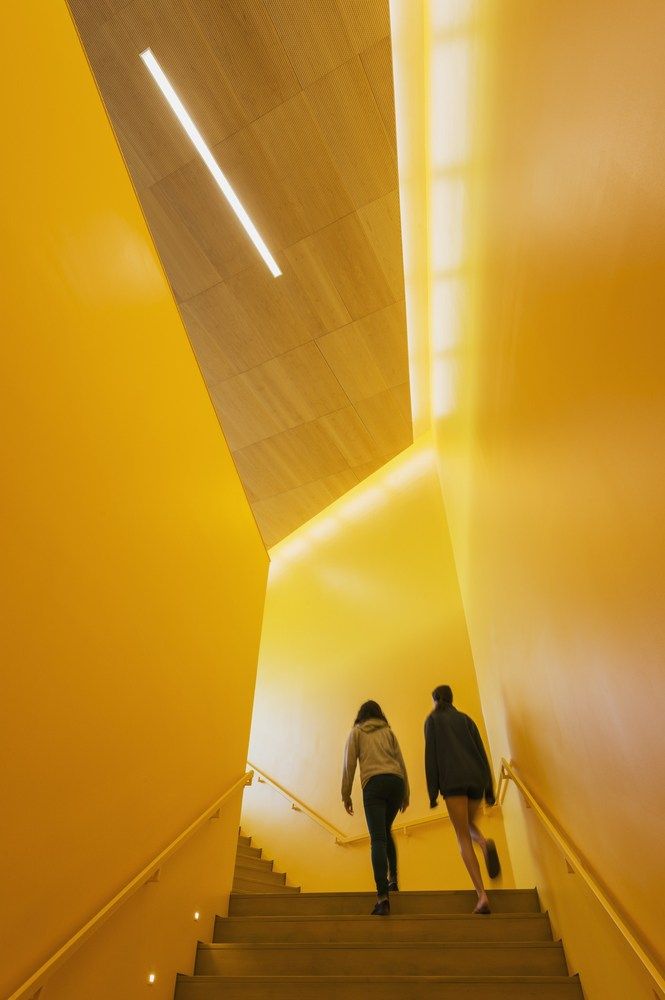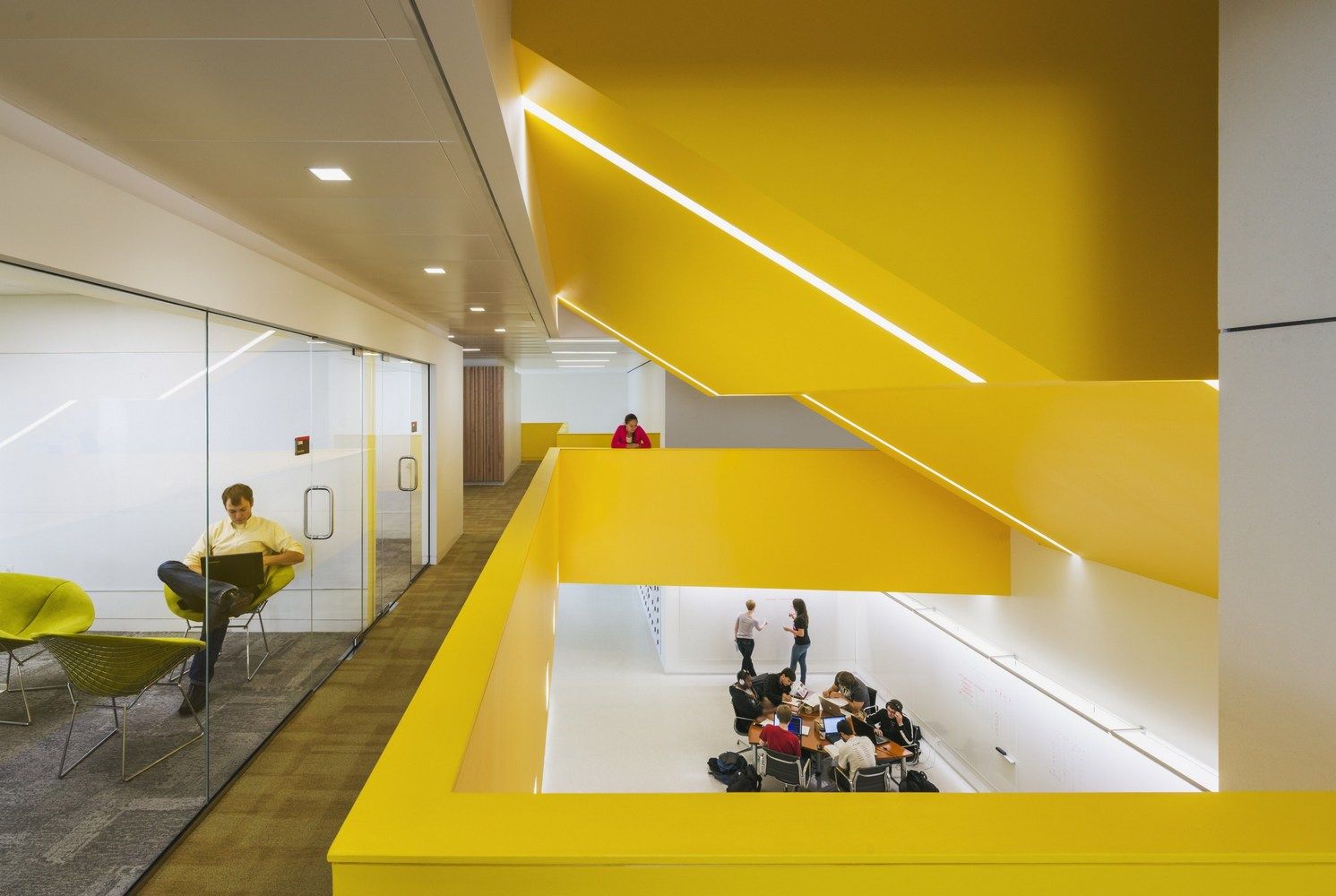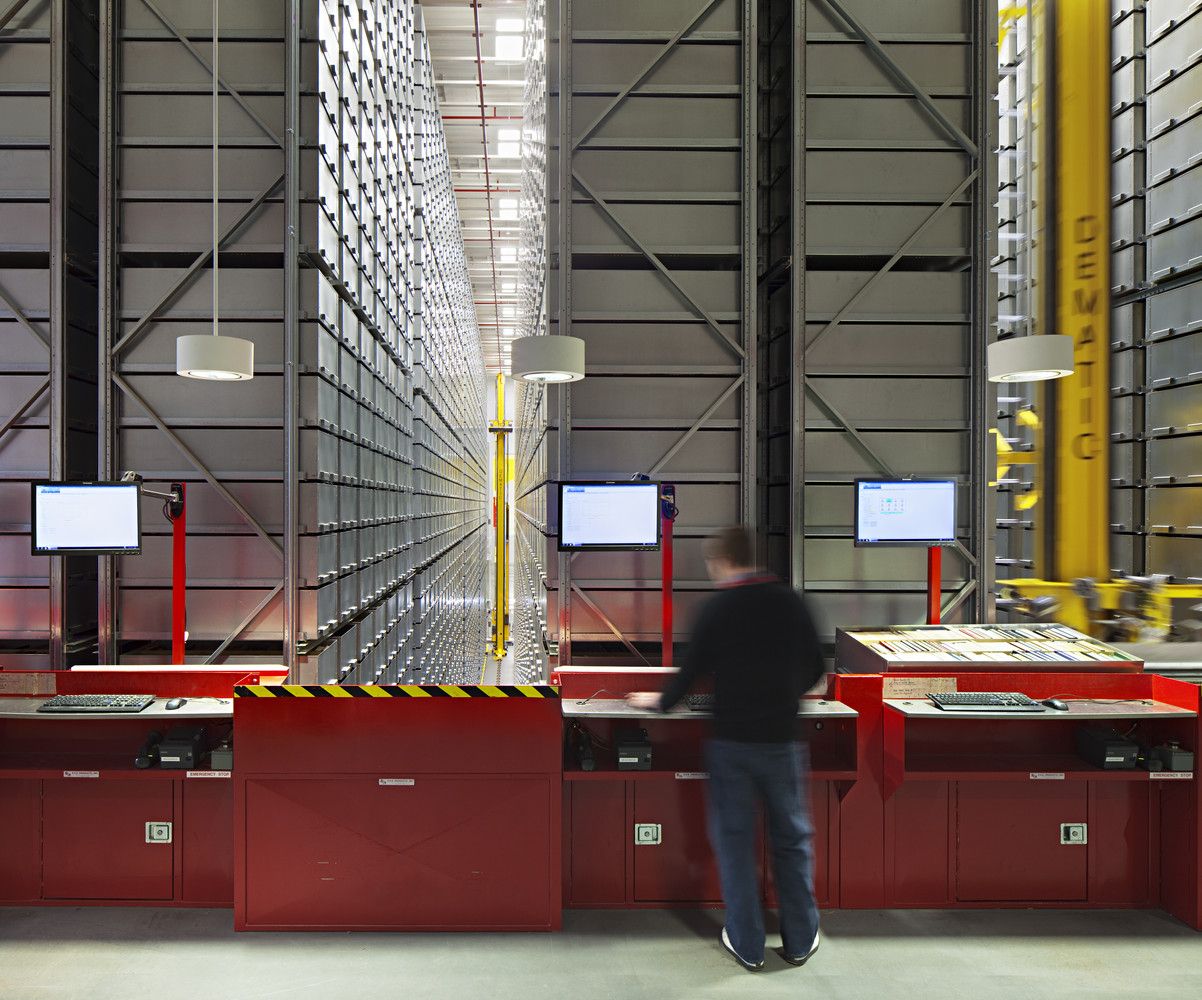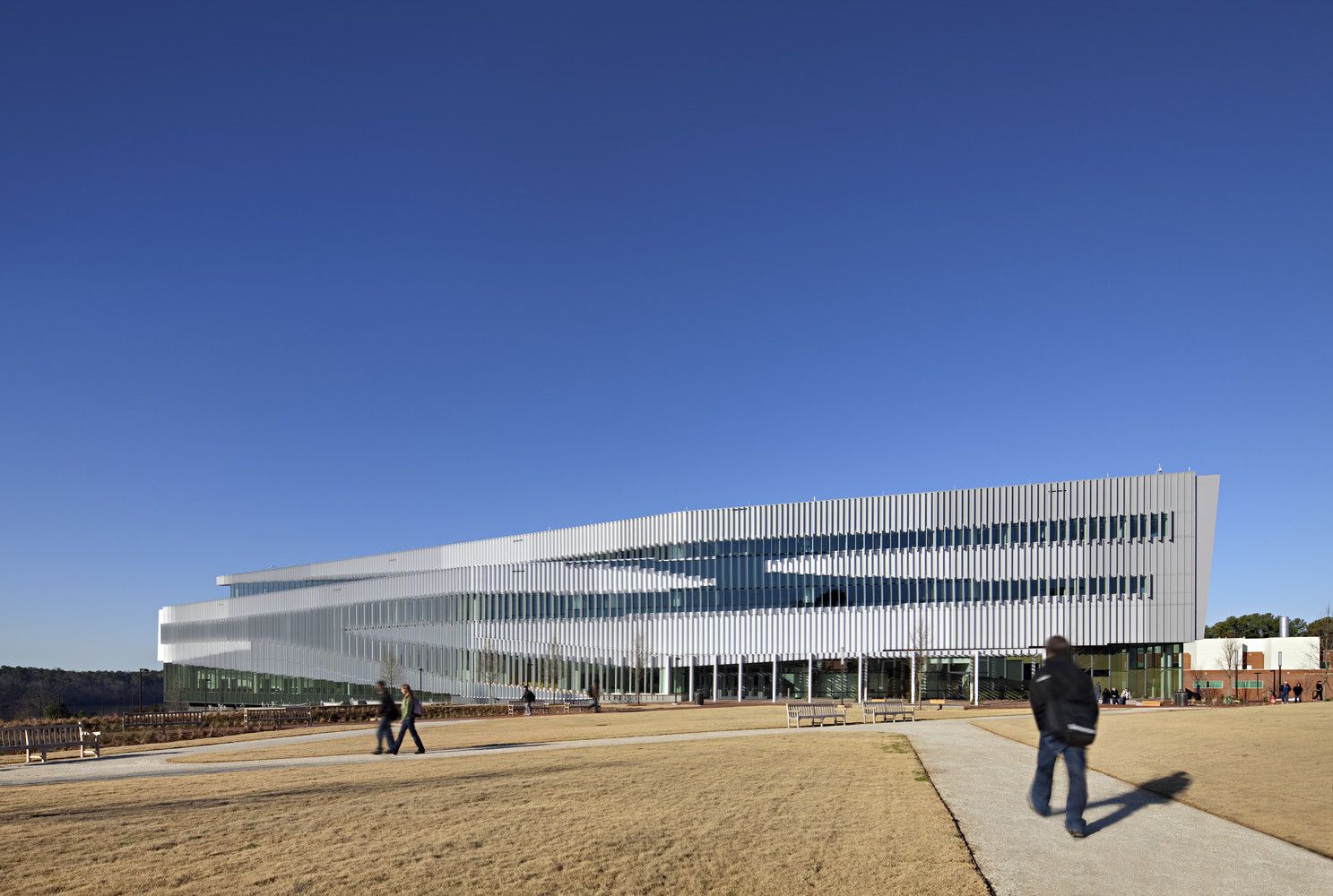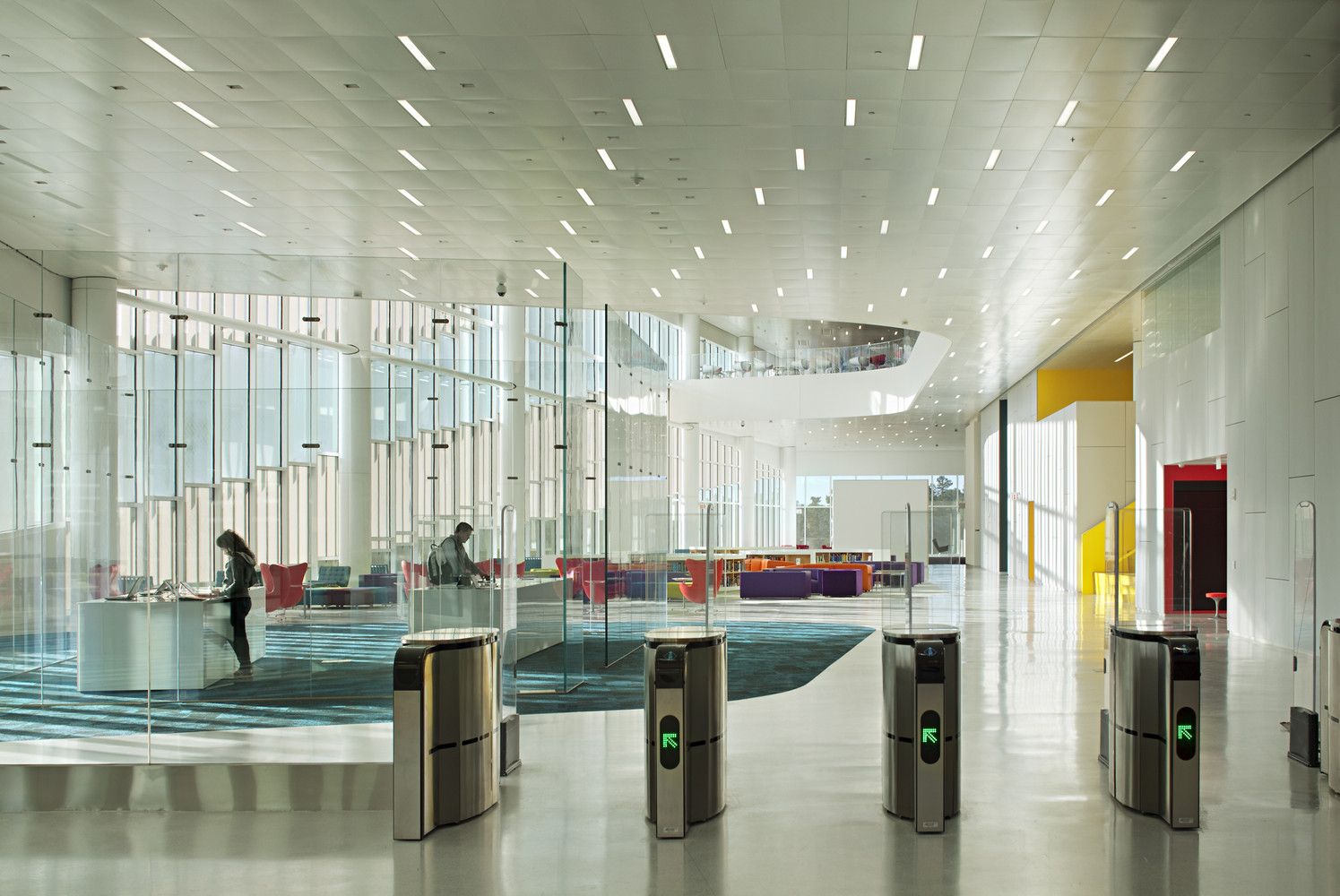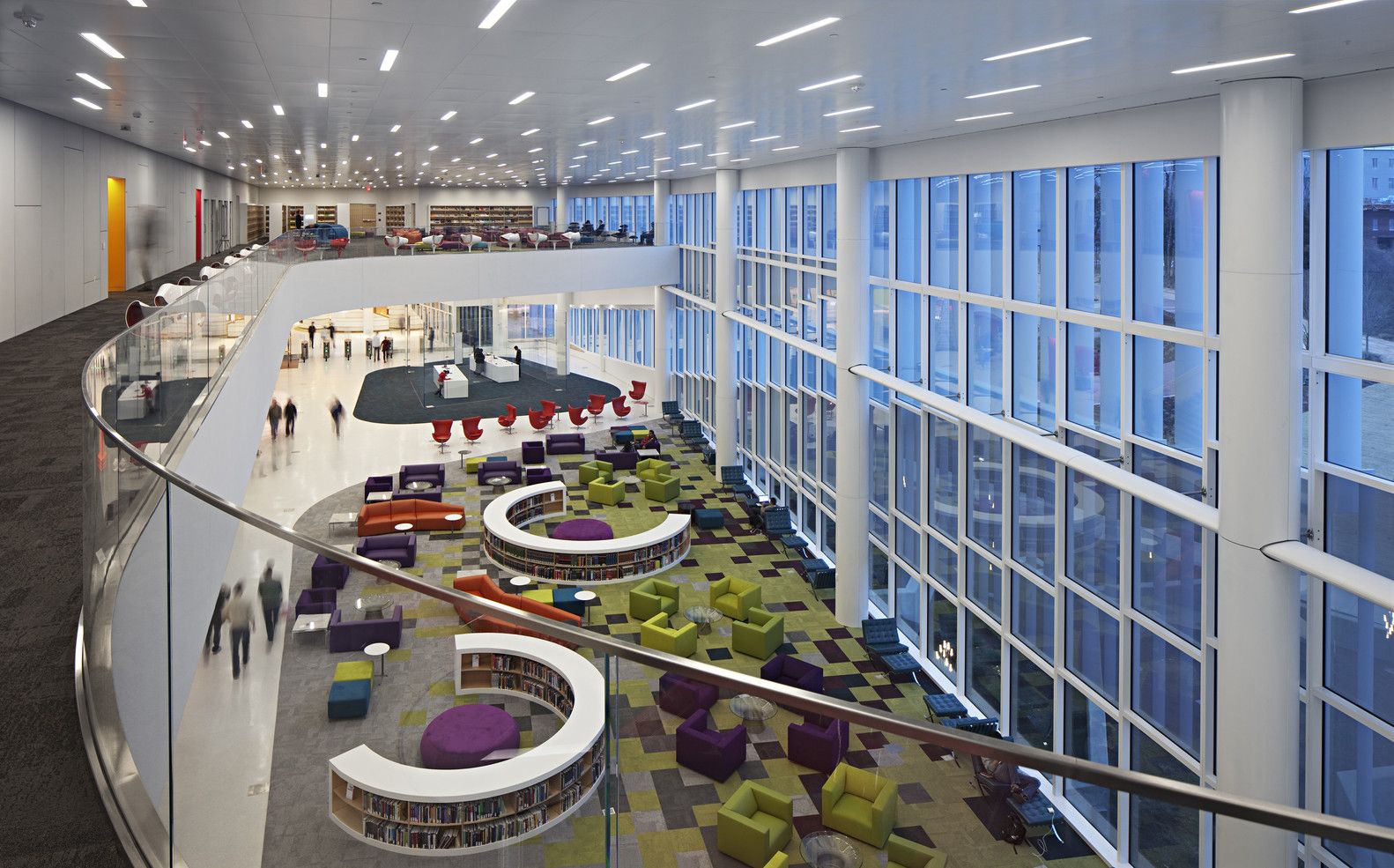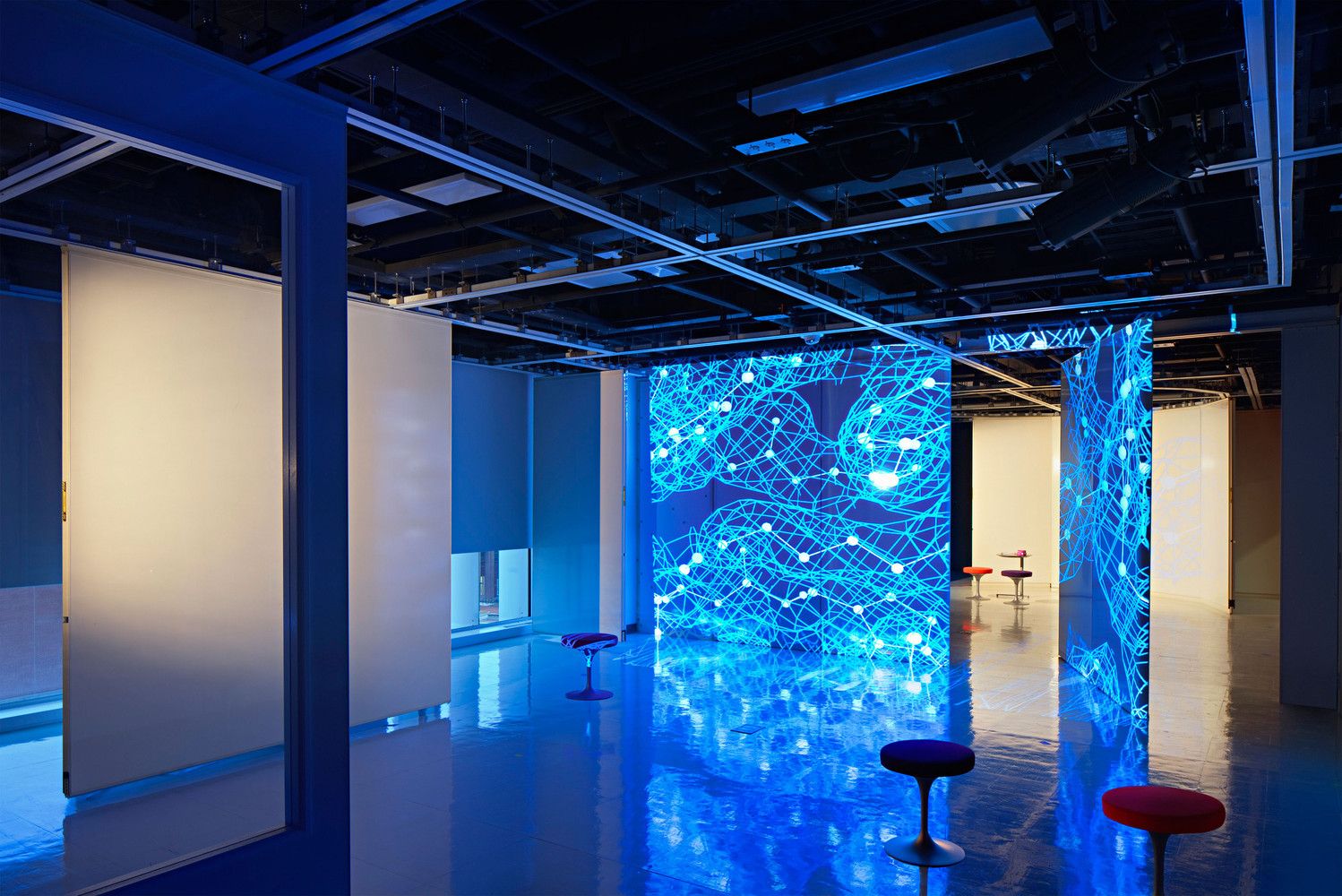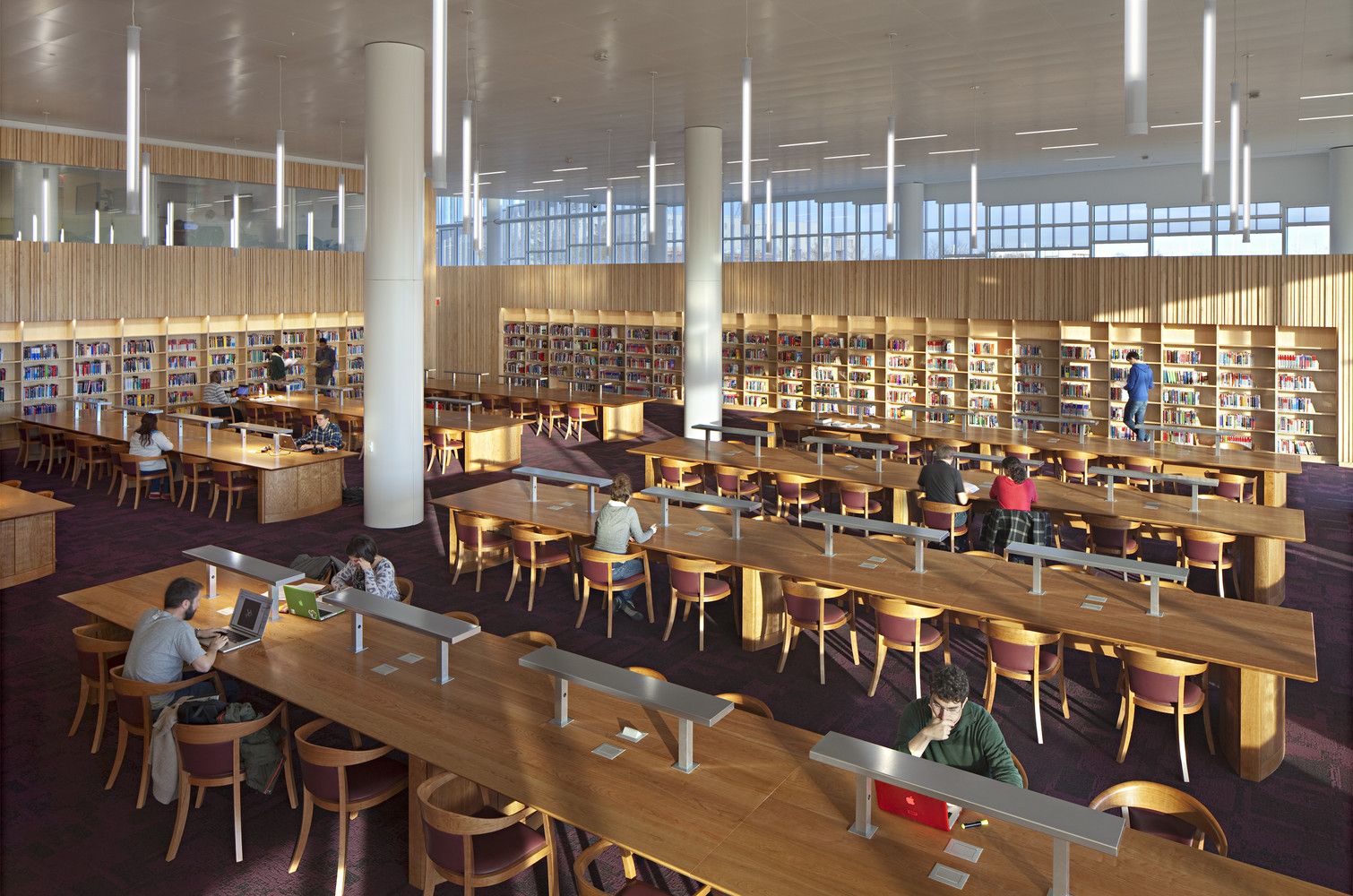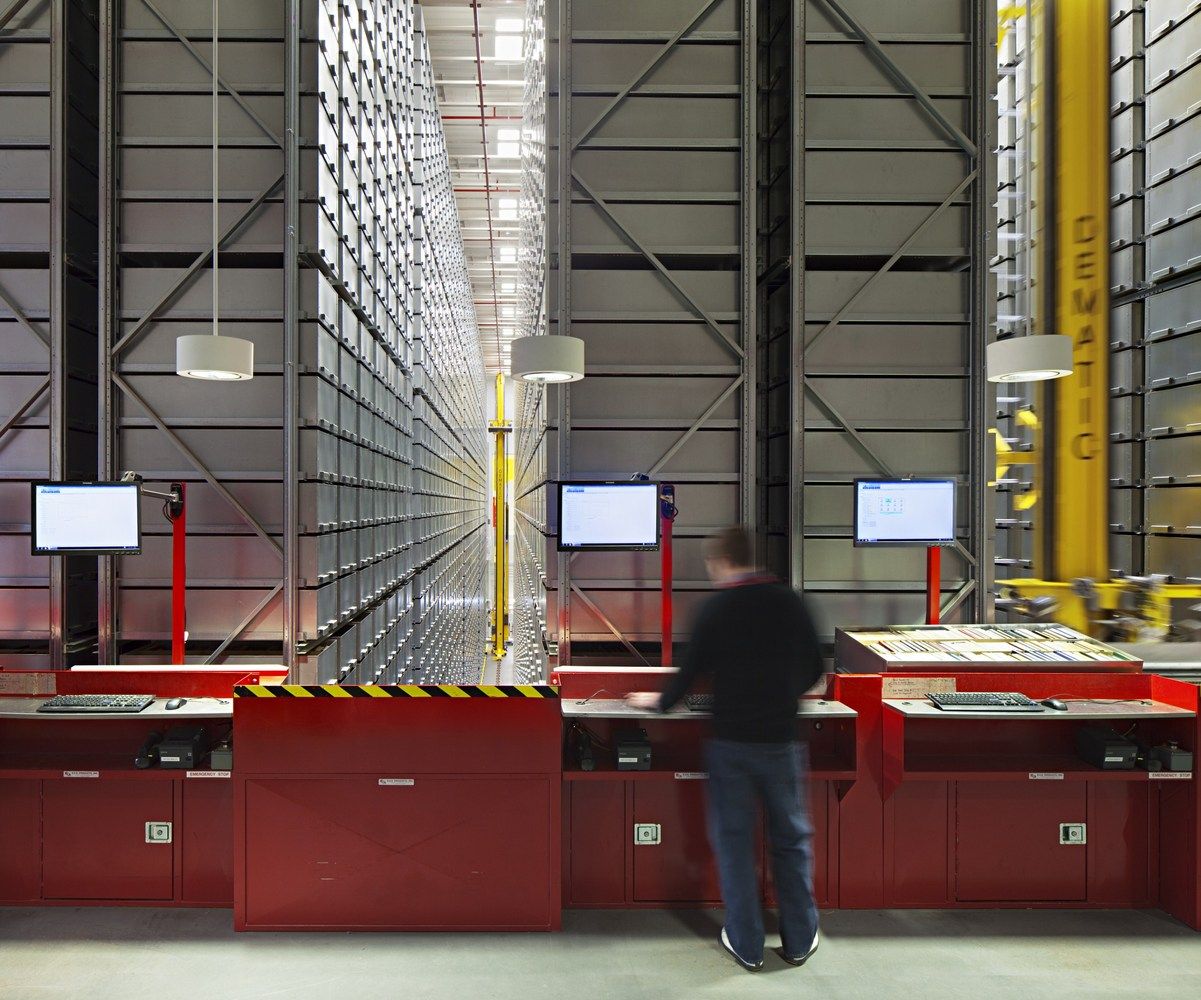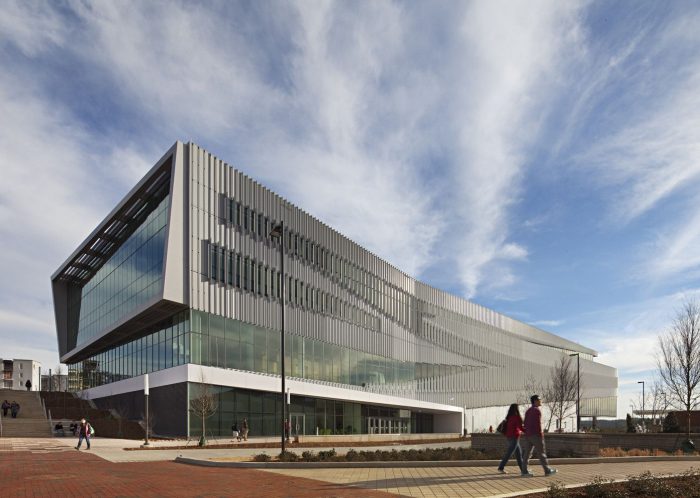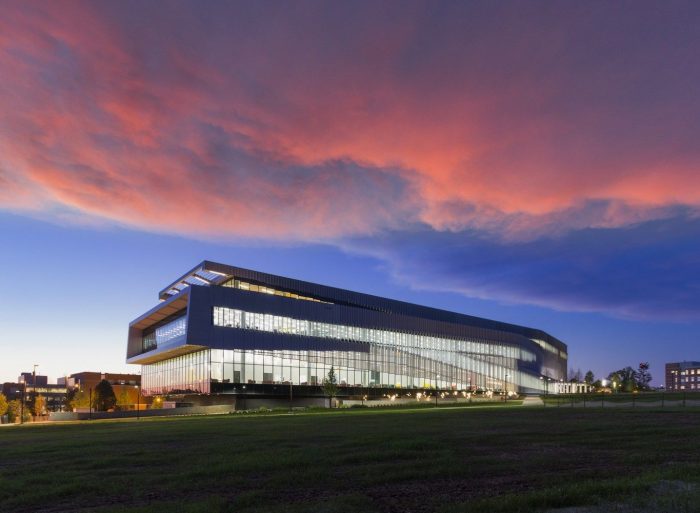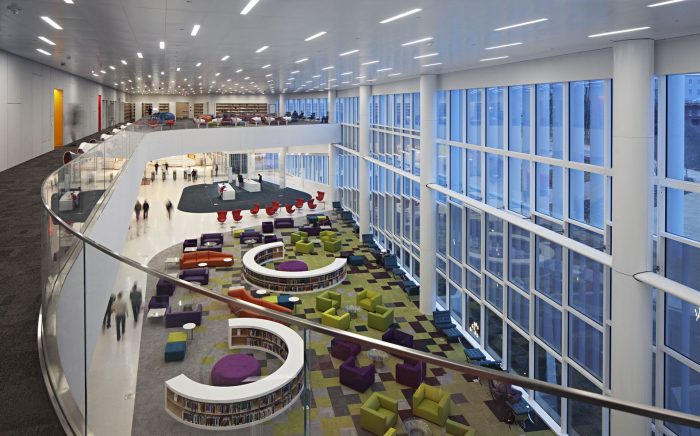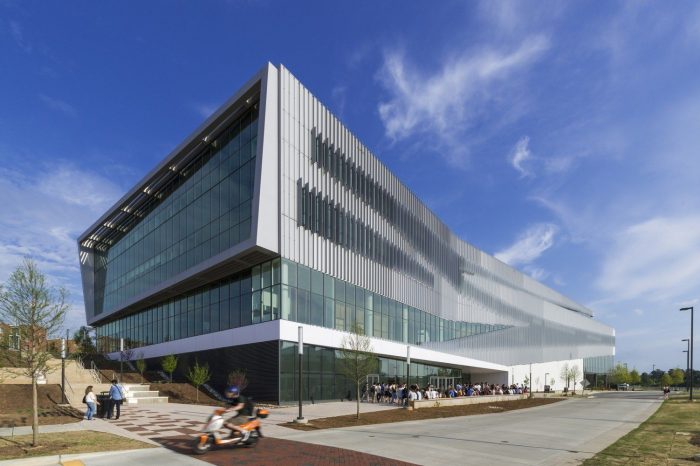One part creative design, one part innovative use of technology, the Hunt Library by Snøhetta is an inspirational space for forward-thinking and higher learning that balances the pre-existing needs and functions of a traditional library with the emerging needs of the modern world. Found within the traditional context of the North Carolina State University, the library has a total area of 221,122 square feet. Within the library there are a wide variety of study and learning environments and technology-focused experimental labs that range from traditional study rooms to more “disruptive” learning spaces with colorful, dynamic furnishings. Connecting all the floors is a generous amount of open spaces and open stairs, allowing for the building to serve as the second main library for the campus but as an intellectual and social center.
The building’s façade is made of fritted glass and contains a fixed external aluminum shading system. This system helps to diminish heat gain while maximizing views and ambient natural light. For extra heating or cooling, ceiling-mounted active chilled beams and radiant panels are in place to help regulate the interior temperature. Robust materials form the interior spaces along with brightly-stained wooden stairs. The exterior landscaping, also designed by Snøhetta, extends the learning environment further into the campus by creating teaching spaces for NCSU students.
By breaking down the larger master-plan into individual diverse experiences, a fluid transition was created between the master-planned landscape of the campus and the natural environment of Lake Raleigh to the south of the library. Rain gardens and green roofs were also incorporated into the building’s infrastructure for storm water management.The following information from Snøhetta describes some of the newer technologies they were able to incorporate into the design of the Hunt library that transformed it into a multi-faceted learning environment.
‘The Hunt Library’s 5- storey robotic bookBot automated retrieval system is capable of holding two million volumes in 1/9 the space of conventional shelving. The system is supported by Virtual Browse, a user-friendly browsing software which enhances the traditional pleasure of browsing a collection by allowing users to see a virtual shelf of materials classified near the resources found by their initial search. The bookBot effectively reduced the total area of the building by 200,000 GSF, allowing more space for collaborative learning environments and technology.
In addition to the bookBot, innovative building features give faculty and students hands-on experience with the large-scale visualization tools. The Game Lab supports NC State’s Digital Games Research Center by providing an experimental commons to explore collaborative game design and the role of gaming in education. The library’s Teaching and Visualization Lab, the Creativity Studio, a 3D printing workshop and extensive digital media production facilities enable faculty and students with rapid prototyping, modeling, and visualization capabilities. State-of-the-art videoconferencing and telepresence technologies allow collaboration with colleagues across the state and around the world. ROTC students are even able to practice commanding a submarine in a simulation environment developed in partnership with the Navy as a tool to better train cadets.’
